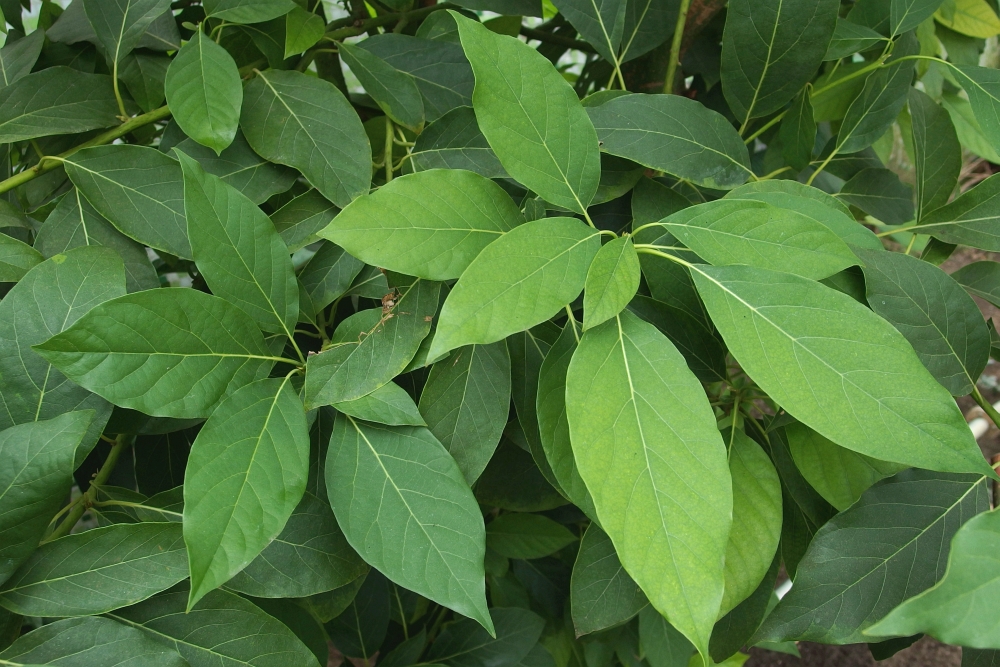Persea americana
English name: Avocado
Latin name: Persea americana
Family: Laurel - Lauraceae
Origin: Mexico, Central America
The avocado is a tropical tree which grows up to 20 m. tall. The leaves are leathery, lanceolate, smooth-edged, 25 cm. long and 2-12 cm. wide, arranged alternately or opposite. The flowers are greenish-yellow, growing in panicles at the top of the shoots. The fruit of this persea species, called the avocado pear (sometimes the “alligator pear” in the southern U.S.), is usually pear-shaped and, less often, round or oval. The thick, green exocarp (outermost skin layer) surrounds the fat, creamy green pulp (mesocarp) and the inedible seed. As the endocarp is a thin seed husk, the fruit is a single-seed berry. However, due to its similarities to drupes, some writers have classified the avocado as a peach-like drupe. The fruit has an extremely long ripening period: on average, six to eight months. Its pulp, constituting 85% of the weight of the fruit, is edible. However, the leaves, branches bark and avocado seeds are poisonous to animals; ingestion may be fatal.
The avocado serves, above all, in the art of cooking. The fats contained in the fruits are also easily absorbed by the human body. Its unsaturated fat content is recommended as a diet supplement or butter substitute, and especially to those suffering from atherosclerosis or hypertension. Avocados are recommended to those suffering from fatty liver disease and abnormal fat metabolism, as its copper content may help normalize levels of liver enzymes, and cause a regression of liver steatosis. The ripe fruit spreads very easily. It is sometimes a substitute for animal fats, and may be enjoyed as a salad and as an appetizer. Adding lemon juice prevents the flesh of the fruit from going brown. Avocados are also used in cosmetics; face masks made from this fruit soothe skin irritation, including that caused by the sun, and nourishes the skin.



